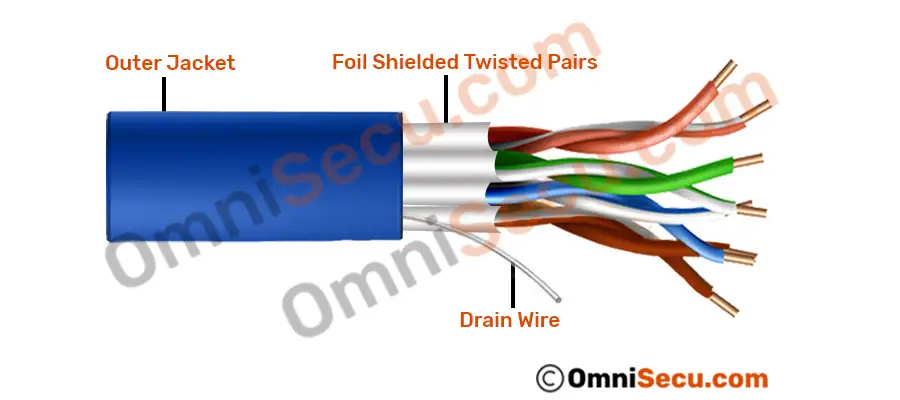Different types of shields used in STP (Shielded Twisted Pair Cable)
Ethernet copper twisted pair cables are broadly classified in to two. Unshielded Twisted Pair (UTP) Cable and Shielded Twisted Pair (STP) cable. Shielded Twisted Pair Cable (STP) uses different shielding techniques to limit any signal from the cable or wire to escape and to reduce electromagnetic interference from outside environment.
A shield is an electrically conductive material that is used to wrap a wire or cable. Two main types of shields used for cables are foil and braid.
Foil shielding uses a thin foil of aluminum. Foils provides complete coverage for the cables. Since the foil is thin, grounding work is difficult.
A braid is another type of shielding used for Shielded Twisted Pair (STP) cables. A braid is a woven mesh of copper or similar metal wires. The main advantage us that the braid provides a low resistance path to ground. It is also easier to handle grounding. Disadvantage of braid is that braids do not cover the cable completely.
The shielding in Shielded Twisted Pair (STP) cables can reduce electromagnetic interference in two ways.
• Shielding can reflect the electromagnetic interference back.
• We can ground the shielding so that shielding can pick the electromagnetic interference from surrounding environment and pass it to the ground, through a Drain Wire.
Shielded Twisted Pair (STP) cables are generally used for Ethernet cabling where there are heavy electrical equipment used and large number of electrical cables are there, which can cause electromagnetic interference. Example: Factories.
Following codes are widely used and adopted by TIA/EIA to represent different types of Shielded Twisted Pair (STP) cables.
| Code | Meaning |
|---|---|
| TP | Twisted Pair |
| U | Unshielded |
| F | Foil Shielded |
| S | Braid Shielded |
From codes described in above table, let’s try to understand different types of Shielded Twisted Pair (STP) cables.
F/UTP type of Shielded Twisted Pair (STP) cables
F/UTP type of Shielded Twisted Pair (STP) cables have an overall foil shield (F). But twisted pairs are unshielded (UTP).
Following image shows F/UTP type of Shielded Twisted Pair (STP) cable.
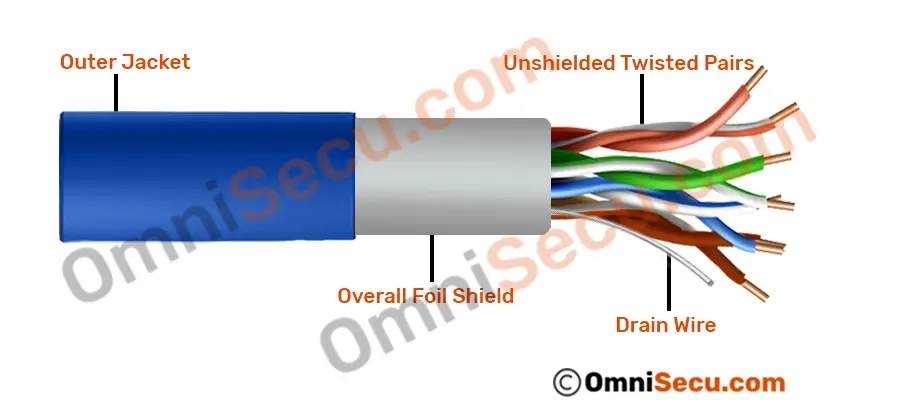
S/UTP type of Shielded Twisted Pair (STP) cables
S/UTP type of Shielded Twisted Pair (STP) cables have an overall braid shield (S). But twisted pairs are unshielded (UTP).
Following image shows S/UTP type of Shielded Twisted Pair (STP) cable.
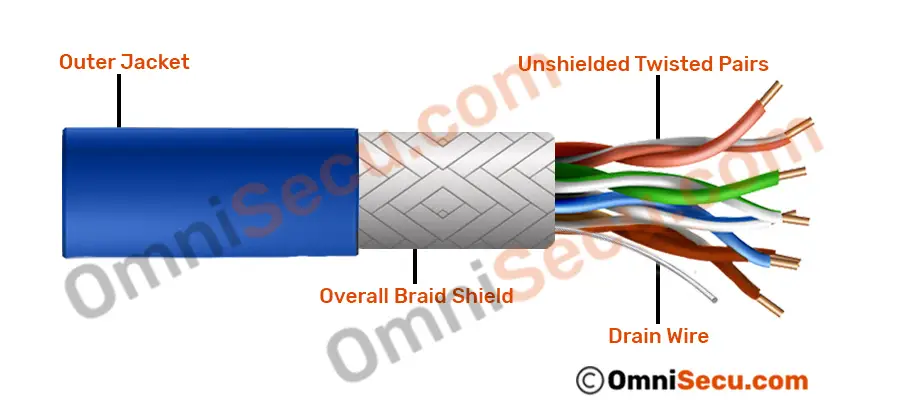
SF/UTP type of Shielded Twisted Pair (STP) cables
SF/UTP type of Shielded Twisted Pair (STP) cables have overall braid shield (S) and also have overall foil shield (F). But twisted pairs are unshielded (UTP).
Following image shows SF/UTP type of Shielded Twisted Pair (STP) cable.
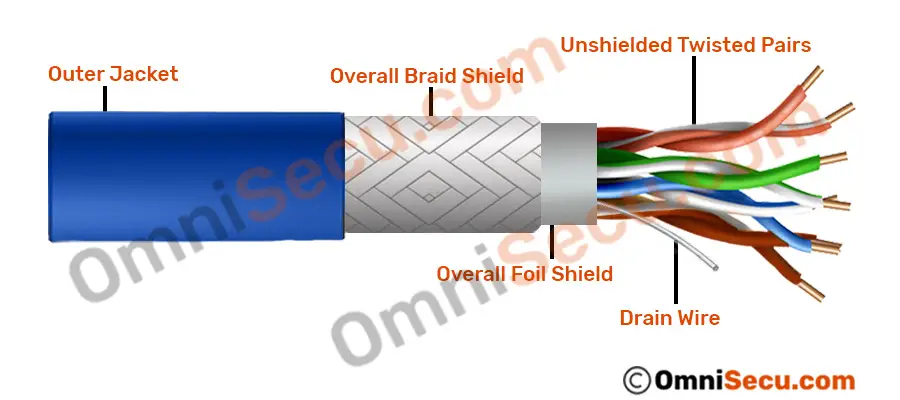
S/FTP type of Shielded Twisted Pair (STP) cables
S/FTP type of Shielded Twisted Pair (STP) cables have an overall braid shield (S). Twisted pairs are foil shielded (FTP).
Following image shows S/FTP type of Shielded Twisted Pair (STP) cable.
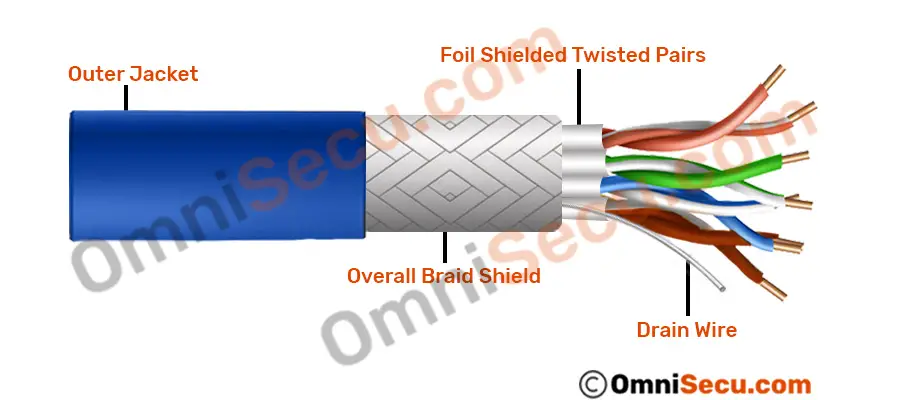
F/FTP type of Shielded Twisted Pair (STP) cables
F/FTP type of Shielded Twisted Pair (STP) cables have an overall foil shield (F). Twisted pairs are also foil shielded (FTP).
Following image shows F/FTP type of Shielded Twisted Pair (STP) cable.
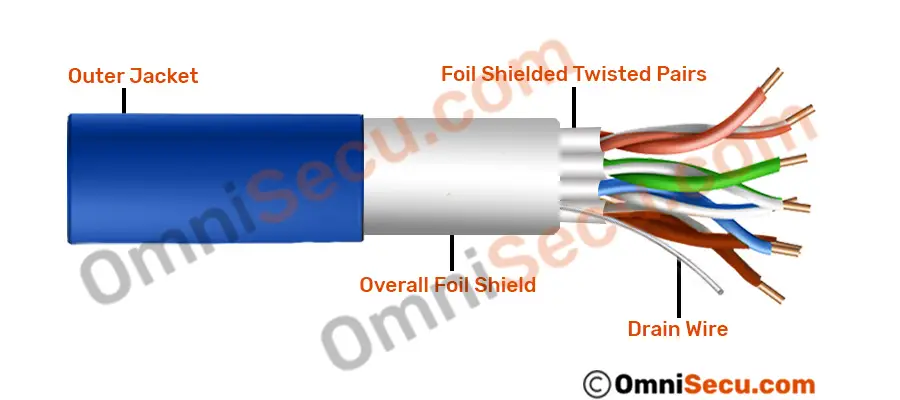
U/FTP type of Shielded Twisted Pair (STP) cables
U/FTP type of Shielded Twisted Pair (STP) cables have no overall shield (no foil shield or braid shield). Twisted pairs are foil shielded (FTP).
Following image shows U/FTP type of Shielded Twisted Pair (STP) cable.
